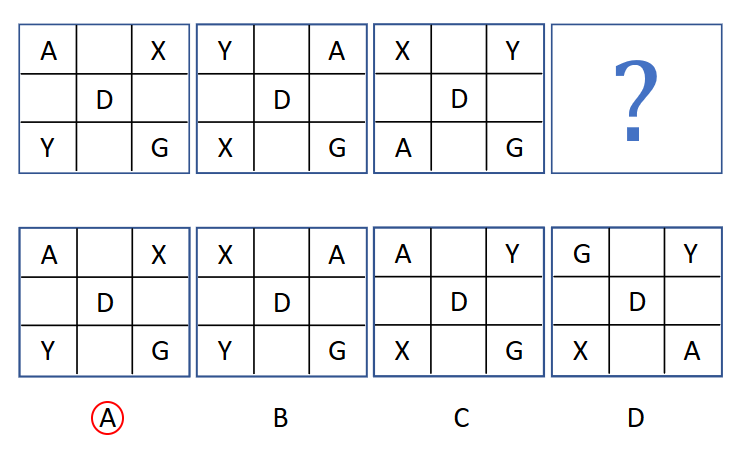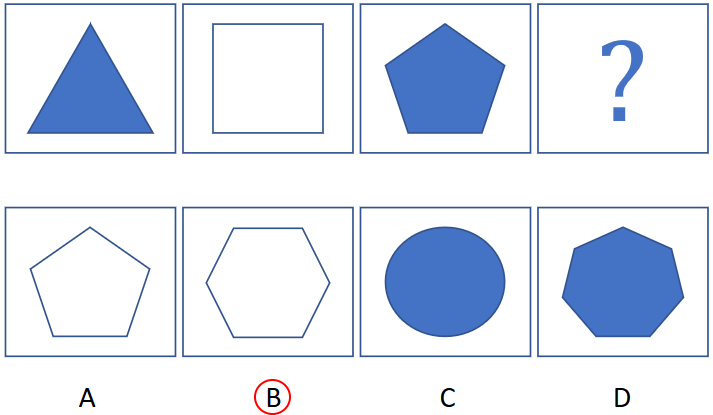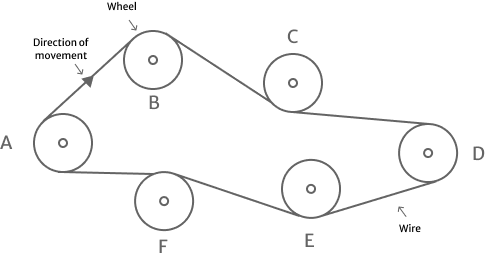Decoding SHL Tests in 2025: Sample Questions With Expert-Reviewed Answers
- Overview
- Questions
- Curriculum
- FAQ
- Reviews
SHL, Saville and Holdsworth Limited, is a global leader in talent assessment solutions, and their tests play a vital role in recruitment processes across various industries. These tests contain a broad spectrum of question types designed to estimate specific cognitive abilities, skill sets, and behavioral characteristics. Statistically, only about 20% of test-takers pass their SHL assessments, illustrating the rigorous challenge they present.
If your goal is to be among this successful percentage, understanding the test structure, diversity, and methodology of these tests is crucial. Let’s look at SHL question types and sample questions with solutions.
Types of SHL Tests
SHL offers a broad spectrum of evaluations, each honed in on different aspects of cognitive abilities and personality traits. These tests are developed with the aim of assessing an individual’s behavioral attributes and personal characteristics, as well as their cognitive skills.
These cognitive abilities include tasks related to Numerical Reasoning, Numerical Calculations, and both Deductive and Inductive Reasoning, facilitated through tools like Verify G+.
Furthermore, SHL assessments also focus on skills simulations, providing realistic scenarios that allow an individual’s job-specific skills to be evaluated. These simulations can range from dealing with hypothetical yet practical tasks to complex problem-solving exercises that closely mirror situations one might encounter on the job.
Depending on the employer and the specific role, candidates may be required to undertake one or more of these tests during the recruitment process.
| Test Type | Number of Questions | Time (in minutes) |
|---|---|---|
| SHL Verify G+ | 30 | 32 – 36 |
| SHL Numerical Reasoning | 18 | 17 – 25 |
| SHL Inductive Reasoning | 24 | 25 |
| SHL Deductive Reasoning | 18 | 20 |
| SHL Verbal Reasoning | 30 | 19 |
| SHL Mechanical Reasoning | Varies | |
| SHL Situational Judgment | 30 – 50 | Untimed |
| SHL OPQ | 30 – 50 | Untimed |
Success Stories 4.4 882 Reviews





Rehan Ali, 06 Jan
The SHL Assessment was very helpful
The SHL Assessment was very helpful. The layout was great and everything was explained good. I passed the test and secured the job. My wife got me this course thanks to her and prepterminal 🙂





Mario Pacini, 21 Dec
I did the SHL Assessment prep and…
I did the SHL Assessment prep and managed to get comfortable with the test in less than 24hrs. Highly recommend this test.





Annonymous, 18 Dec
Course helped me pass SHL exam
Course helped me pass SHL exam. Highly recomended.





rob, 16 Jan
Solid review course that covers the…
Solid review course that covers the relevant topics in good detail





chad, 11 Jan
Great Program, amazing practice simulations
Easy to understand. Passed tests on first time thru.





QUEEN RIGHTEOUS, 07 Jan
Highly recommended.Great instructional…
Highly recommended.Great instructional information. I passed on the first try.





Rehan Ali, 06 Jan
The SHL Assessment was very helpful
The SHL Assessment was very helpful. The layout was great and everything was explained good. I passed the test and secured the job. My wife got me this course thanks to her and prepterminal 🙂





Mario Pacini, 21 Dec
I did the SHL Assessment prep and…
I did the SHL Assessment prep and managed to get comfortable with the test in less than 24hrs. Highly recommend this test.





Annonymous, 18 Dec
Course helped me pass SHL exam
Course helped me pass SHL exam. Highly recomended.





rob, 16 Jan
Solid review course that covers the…
Solid review course that covers the relevant topics in good detail





chad, 11 Jan
Great Program, amazing practice simulations
Easy to understand. Passed tests on first time thru.





QUEEN RIGHTEOUS, 07 Jan
Highly recommended.Great instructional…
Highly recommended.Great instructional information. I passed on the first try.





Rehan Ali, 06 Jan
The SHL Assessment was very helpful
The SHL Assessment was very helpful. The layout was great and everything was explained good. I passed the test and secured the job. My wife got me this course thanks to her and prepterminal 🙂





Mario Pacini, 21 Dec
I did the SHL Assessment prep and…
I did the SHL Assessment prep and managed to get comfortable with the test in less than 24hrs. Highly recommend this test.





Annonymous, 18 Dec
Course helped me pass SHL exam
Course helped me pass SHL exam. Highly recomended.
Numerical Reasoning Questions and Answers
These questions test your ability to interpret numerical data presented in tables, graphs, or charts, and apply basic mathematical operations. You’ll need a good understanding of percentages, ratios, and basic arithmetic to succeed in this section.
| Cost Per Unit USD | |||||
| Products | Materials | Manufacture | QA | Sale per unit (USD) | Profit per unit (USD) |
| Coppice I | 7.4 | 1.9 | 0.3 | 12.9 | 3.3 |
| Coppice II | 6.8 | 2.4 | 0.4 | 12.6 | 4 |
| Oakthorpe | 5.3 | 1.1 | 0.1 | 9.1 | 2.6 |
| Kingshurst-A | 13.5 | 3.4 | 0.6 | 20.0 | 2.5 |
| Kingshurst-S | 15.2 | 4.1 | 0.7 | 25.0 | 5 |
- A:
Coppice I
- B:
Coppice II
- C:
Oakthorpe
- D:
Kingshurst-A
- E:
Kingshurst-S
Explanation:
To determine the product with the highest profit margin, we need to calculate the profit margin for each option. Profit margin is calculated by dividing the profit per unit by the sale per unit and multiplying by 100 to get a percentage.
The profit margin for each option is as follows:
- A) Coppice I: ($3.3 / $12.9) * 100 = 25.58%
- B) Coppice II: ($4 / $12.6) * 100 = 31.75%
- C) Oakthorpe: ($2.6 / $9.1) * 100 = 28.57%
- D) Kingshurst-A: ($2.5 / $20.0) * 100 = 12.5%
- E) Kingshurst-S: ($5 / $25.0) * 100 = 20%
Coppice II offers a profit margin of 31.75%, which is the highest among the given options. This indicates that for every unit sold, Coppice II generates the highest percentage of profit compared to its selling price, making it the most profitable option in terms of profit margin.
| Products | Materials (USD) | Labor (USD) | Overhead (USD) | Sale per unit (USD) | Profit per unit (USD) |
| Harmony I | 8.2 | 2.5 | 0.4 | 15.9 | 4.8 |
| Harmony II | 7.6 | 2.8 | 0.5 | 15.4 | 5.1 |
| Serenity | 6.9 | 1.9 | 0.3 | 12.5 | 3.4 |
| Tranquility | 9.5 | 3.2 | 0.6 | 17.2 | 4.9 |
| Euphoria | 7.8 | 2.6 | 0.4 | 14.8 | 4 |
- A:
Harmony I
- B:
Serenity
- C:
Tranquility
- D:
Harmony II
- E:
Euphoria
Explanation:
To determine the product with the highest profit margin, we need to calculate the profit margin for each option. Profit margin is calculated by dividing the profit per unit by the sale per unit and multiplying by 100 to get a percentage.
The profit margin for each option is as follows:
- A) Harmony I: ($4.8 / $15.9) * 100 = 30.19%
- B) Harmony II: ($5.1 / $15.4) * 100 = 33.12%
- C) Serenity: ($3.4 / $12.5) * 100 = 27.20%
- D) Tranquility: ($4.9 / $17.2) * 100 = 28.49%
- E) Euphoria: ($4.0 / $14.8) * 100 = 27.03%
Harmony II offers a profit margin of 33.12%, which is the highest among the given options. This indicates that for every unit sold, Harmony II generates the highest percentage of profit compared to its selling price, making it the most profitable option in terms of profit margin.
Verbal Reasoning Questions and Answers
Here, you’ll be provided with a passage of text and asked to make logical deductions based on the information provided. It’s a test of your comprehension skills, critical thinking, and ability to make informed decisions quickly.
Global warming is a pressing environmental issue that has raised concerns worldwide. One of the major contributors to global warming is the emission of greenhouse gases, such as carbon dioxide (CO2) and methane (CH4). These gases trap heat in the Earth's atmosphere, leading to an increase in average global temperatures. Various strategies are being explored to mitigate greenhouse gas emissions, including the promotion of renewable energy sources and the adoption of energy-efficient technologies.
- A:
True
- B:
False
- C:
Partially True
- D:
Cannot Say
Explanation:
The passage mentions that greenhouse gases, including methane, contribute to global warming. However, it does not state that the burning of fossil fuels is the main source of methane emissions. While the burning of fossil fuels can release methane, other significant sources of methane emissions include agriculture (livestock farming, rice cultivation), landfills, and natural gas production. Therefore, based on the given information, we cannot conclude that the main source of methane emissions contributing to global warming is the burning of fossil fuels.
The human brain undergoes significant development during childhood and adolescence. One of the key developmental milestones is the growth and maturation of the prefrontal cortex, a brain region associated with decision-making, problem-solving, and impulse control. This maturation process continues into early adulthood, influencing cognitive abilities and behavior.
- A:
True
- B:
False
- C:
Partially True
- D:
Cannot Say
Explanation:
The passage states that the prefrontal cortex undergoes growth and maturation during childhood and adolescence, and this process continues into early adulthood. However, it does not specify whether the prefrontal cortex fully matures by the end of adolescence. The maturation of the prefrontal cortex is a complex process that varies among individuals and may extend beyond adolescence. Therefore, based on the given information, we cannot determine whether the prefrontal cortex fully matures by the end of adolescence or not.
Inductive Reasoning Questions and Answers
These questions assess your ability to identify patterns and logical rules in sequences of shapes or symbols. They test your spatial awareness, analytical thinking, and ability to make deductions under time pressure.


Situational Judgement Questions and Answers
These questions present you with hypothetical, but work-related situations, and ask you to choose the most suitable course of action from a set of given options. They are designed to evaluate your decision-making abilities, judgment, and understanding of effective workplace behavior.
Scenario: You are working on a team project with tight deadlines. One of your team members, who is responsible for a crucial task, informs you that they are experiencing personal issues and are unable to complete the task on time. They ask if you can cover for them and complete the task before the deadline. You know that taking on this additional task will require extra effort and may impact your own workload.
- A:
Agree to cover for your team member and take on the task to ensure the project stays on schedule.
- B:
Refuse to cover for your team member and insist that they find a way to complete the task on their own.
- C:
Inform your team member that you are unable to take on the task due to your own workload and suggest alternative solutions, such as redistributing the workload within the team or extending the deadline.
- D:
Agree to cover for your team member temporarily but inform your supervisor about the situation, requesting additional support or deadline extension if needed.
Scenario: You are a manager responsible for a team of employees. One of your team members consistently produces high-quality work and completes tasks ahead of schedule. Another team member, however, consistently misses deadlines and submits work with errors. It has come to your attention that the underperforming team member is facing personal challenges that may be affecting their performance.
- A:
Reprimand the underperforming team member and remind them of the expectations and consequences of not meeting deadlines.
- B:
Give all team members additional training and resources to ensure consistency in performance across the team.
- C:
Provide additional support and guidance to the underperforming team member, including discussing their personal challenges and exploring possible solutions or accommodations.
- D:
Remove the underperforming team member from the project or team and find a replacement who can meet the deadlines and produce high-quality work.
Personality and Behavioral Questions and Answers
These are not scored tests, but rather assessments that analyze your personality traits and behavioral tendencies. They aim to predict how well you would fit within the company’s culture and the specific role you’ve applied for.
Scenario:
You are working on a team project, and one of your team members consistently misses deadlines and fails to complete their assigned tasks. This behavior is affecting the progress of the project and causing frustration among other team members.
- A:
Confront the team member privately and discuss the impact of their behavior on the project and the team.
- B:
Report the team member's behavior to your supervisor or project manager.
- C:
Offer assistance and support to the team member to help them improve their performance.
- D:
Organize a team meeting to address the issue collectively and find a solution together.
- E:
Ignore the team member's behavior and take on their tasks to ensure the project stays on track.
Scenario:
You are working on a team project, and during a team meeting, one of your colleagues consistently interrupts and dominates the conversation, making it difficult for others to contribute their ideas. This behavior is hindering effective collaboration and stifling creativity.
- A:
Politely interrupt and assertively request that your colleague allows others to speak and share their ideas.
- B:
Privately approach your colleague after the meeting and express your concern about their dominating behavior.
- C:
Facilitate the meeting by setting ground rules for equal participation and encouraging everyone to contribute.
- D:
Bring up the issue with your supervisor or team leader and seek their guidance on managing the situation.
- E:
Ignore the dominating behavior and focus on contributing your ideas whenever you get the chance.
Mechanical Comprehension Questions and Answers
These evaluations are designed to measure a candidate’s capacity to grasp and implement fundamental mechanical and physical concepts. The questions are centered around diverse mechanical devices and scenarios, such as pulley systems and belt drives. Here, candidates are expected to discern the correct response by employing their mechanical understanding.

- A:
C - E - A - B
- B:
A - B - E - F
- C:
D - E - A - B
- D:
F - B - D- E
Explanation:
As the belt is moving clockwise, the upper half is moving to the right and the lower half is moving to the left. The wheels contained within the belt rather than those on the outside will be pulled clockwise with the belt, while those on the outside will be pulled in the opposite direction. As A, B, D, and E are contained within the belt, they are turning clockwise.
- A:
Belt width and thickness
- B:
Pulley size and diameter
- C:
Belt material and tensile strength
- D:
Belt tension and slip ratio
Explanation: The primary factor that influences the power transmission capacity in belt drives is the belt material and its tensile strength. The material of the belt determines its ability to withstand the applied load and transmit power effectively. The tensile strength of the belt is crucial as it defines the maximum load the belt can handle without breaking. Options A, B, and D (belt width and thickness, pulley size and diameter, belt tension, and slip ratio) can impact the overall performance and efficiency of the belt drive system but do not primarily determine the power transmission capacity.
Spatial Awareness Questions and Answers
These tests assess a candidate’s comprehension of spatial dimensions and ability to manipulate the spatial dimensions of shapes. Candidates are often required to answer questions about rotation or reflection, or they may be required to identify the correct 3d shape which would be created by 2d plans.

- A:
A
- B:
B
- C:
C
- D:
D
Top Tips for Passing Your SHL Test
Preparing for the upcoming SHL tests is crucial to increase your chances of success, and doing so requires a well-structured and dedicated approach. Here’s a guide on how to practice effectively:
Use Practice Tests: SHL practice tests are your best friends when it comes to preparation. They provide a realistic experience of what you can expect in the actual exam and allow you to familiarize yourself with the types of questions asked. Resources for free SHL tests with answers are available online to aid your practice.
Review Answers: The key to mastering SHL assessments is to not only take practice tests but to review your answers meticulously. Check whether your SHL test answers align with the provided solutions and explanations. Understanding the underlying reasoning behind each solution, even for questions you answered correctly, can provide valuable insights and enhance your overall understanding of the assessment.
Improve Speed and Accuracy: Remember, SHL tests are typically timed, and hence speed is just as important as accuracy. Regular practice will help improve both. Start by focusing on answering accurately, then gradually aim to answer faster.
Go through Study Guides & Download Prep Material: Take advantage of study guides and online resources that offer SHL assessment preparation. These study guides provide valuable help in answering different question types. You can also consider downloading convenient prep materials, such as an SHL Question & Answer cheat PDF, to optimize your study time. This resource allows you to conveniently review and prepare on your mobile device, even when you’re on the go.
